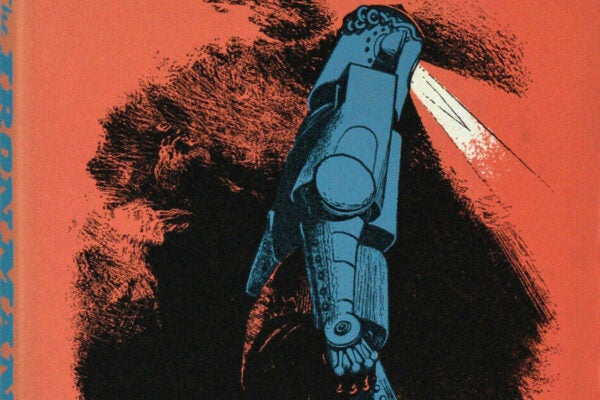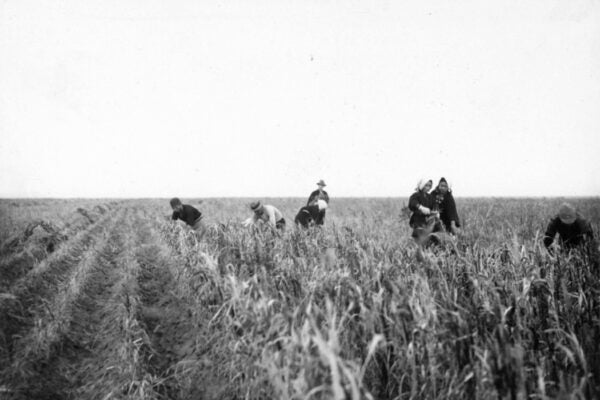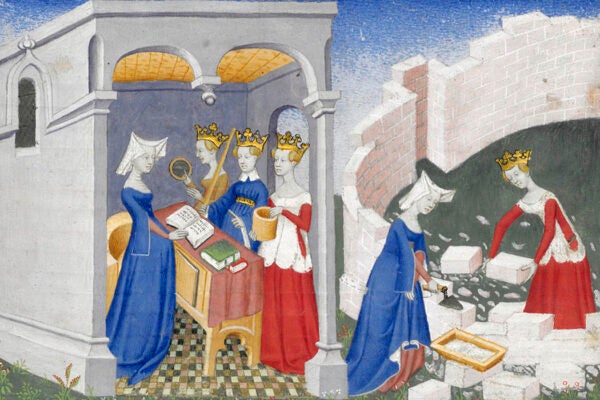“The whole world is watching!” the protestors roared in unison, as Americans tuned into the evening news to witness the carnage erupting at the 1968 Democratic National Convention in Chicago. Baton-wielding cops cracked heads, according to the historian Melvin Small, tear-gassed the once-peaceful demonstrators, and National Guard members marched around Grant Park with M1 Garand rifles, complete with bayonets.
That spring, Martin Luther King, Jr. and Robert F. Kennedy were assassinated, while the Vietnam War rolled on. When the convention came around in late August, Richard Nixon had already locked in the Republican nod, while Hubert Humphrey was vying for the other side of the ballot against Eugene McCarthy, the anti-war senator from Minnesota.
Weekly Newsletter
Humphrey (ultimately the winner of the Democratic side of the ticket) wouldn’t break with President Lyndon Johnson and his pro-war stance on Vietnam (Johnson had decided not to run for a second term), and, as such, a protest was inevitable. Hippies, Yippies, Students for a Democratic Society (SDS) members, and college-aged kids descended en masse to the city to show their disenchantment.
Among the swirl were Esquire’s three correspondents—the satirist Terry Southern, Naked Lunch author William S. Burroughs, and the French writer Jean Genet. The magazine “parachuted them in” to give an eye-witness account of the events. “Going there wasn’t our idea,” Southern said decades later, adding: “You have no idea how wild the police were. They were totally out of control. I mean, it was a police riot, that’s what it was.” The writer would later be called to testify in the conspiracy trial of the so-called Chicago Seven.
* * *
Southern captured the chaos in a subsequent article titled “Grooving in Chi.” At freewheeling turns, the work shifts around accounting the “rage [that] seemed to engender rage; the bloodier and the more brutal the cops were, the more their fury increased,” moving to him hanging with Allen Ginsberg while the poet chanted “om” in Lincoln Park in an effort to calm the demonstrators down, to Southern having drinks at a hotel bar with the writer William Styron. “There was a certain undeniable decadence,” Southern writes, “in the way we sat there, drinks in hand, watching the kids in the street get wiped out.”
At one point, Southern witnessed the police using undercover provocateurs—“cops dressed like hippies whose job it was to incite the crowd to acts of violence which would justify police intervention or, failing that, to commit such acts themselves” (a practice, as it happens, that police still use today). Southern encapsulates the mindset of those who opposed the anti-war objectors, ending the piece by quoting a middle-aged man and Humphrey supporter. While standing next to the writer and viewing an officer beating “a thin blond boy around seventeen,” the bystander sides with the cop, telling Southern, “Hell… I’d sooner live in one of those damn police states as put up with that kind of thing.”
Southern wasn’t an overtly political writer, but politics always got into the blood of his work from the 1950s and 60s. For him, surreal satire was a form of social protest. In a Life magazine profile, Southern said his task was to “to astonish.” He added: “Not shock—shock is a worn-out word—but astonish. The world has no grounds for complacency. The Titanic couldn’t sink but it did. Where you find something worth blasting, I want to blast it.” The things he wanted imploded were, among other things, greed, sanctimony, frauds, moralism, and injustice.
* * *
Southern contained multitudes: He was a first-rate screenwriter, novelist, essayist, cultural tastemaker, critic, craftsman of the weird short-story, and a devotee of letter-writing (a mode he once called “the purest form of writing there is… because it’s writing to an audience of one”). One of Southern’s touchstones was the notion of the grotesque—he wanted to examine what disturbed people, pushing a macabre-showing mirror back in his audience’s face, and to muck through the modern American “freak show” at large.
Born in the cotton-farming town of Alvarado, Texas, in 1924, Southern went on to become a U.S. Army demolitions expert in World War II. After earning an English degree at Northwestern University, he subsequently studied philosophy in Paris at the Sorbonne, via the G.I. Bill. In France, after finishing up at school in the early fifties, Southern stayed in the Latin Quarter for a stint—enticed by existentialism, the city’s jazz scene, and the literary crowd he fell into.
Among his acquaintances and peers were Henry Miller, Samuel Beckett, and the founders of The Paris Review, George Plimpton and Peter Matthiessen. According to Matthiessen, he’s said the discovery of Southern’s short story “The Accident” was the “catalyst” for starting the literary publication—a piece that ran in the first issue (1953).
By the 60s, Southern was an alternative culture icon and one of the best-known writers in America. He landed on the cover of The Beatles’ Sgt. Pepper’s Lonely Hearts Club Band, nested behind his friend Lenny Bruce and his hero Edgar Allan Poe. The critic Dwight Garner once called him the “countercultural Zelig.” In many ways, his work can be seen as an artistic bridge between the Beats and the subsequent Hippie Generation.
Southern, however, never fit snugly into either camp. According to David Tully, author of the critical study Terry Southern and the American Grotesque (2010), Southern traced his literary lineage to writers like Poe, William Faulkner, and continental philosophy, while Beats like Jack Kerouac and Allen Ginsberg’s sensibility stemmed from Walt Whitman, Ralph Waldo Emerson, as well as Buddhism. “[A]rt,” Southern once said, “should be iconoclastic.”
Southern’s reputation was as one of the leading “put-on” black humorists, then seen as a subversive sensibility, one that used irony to cast fury at society. Critics lumped Southern in with Thomas Pynchon, Kurt Vonnegut, and Joseph Heller. In 1967, The New Yorker called him “the greatest fake-out protractor in modern literature.”
* * *
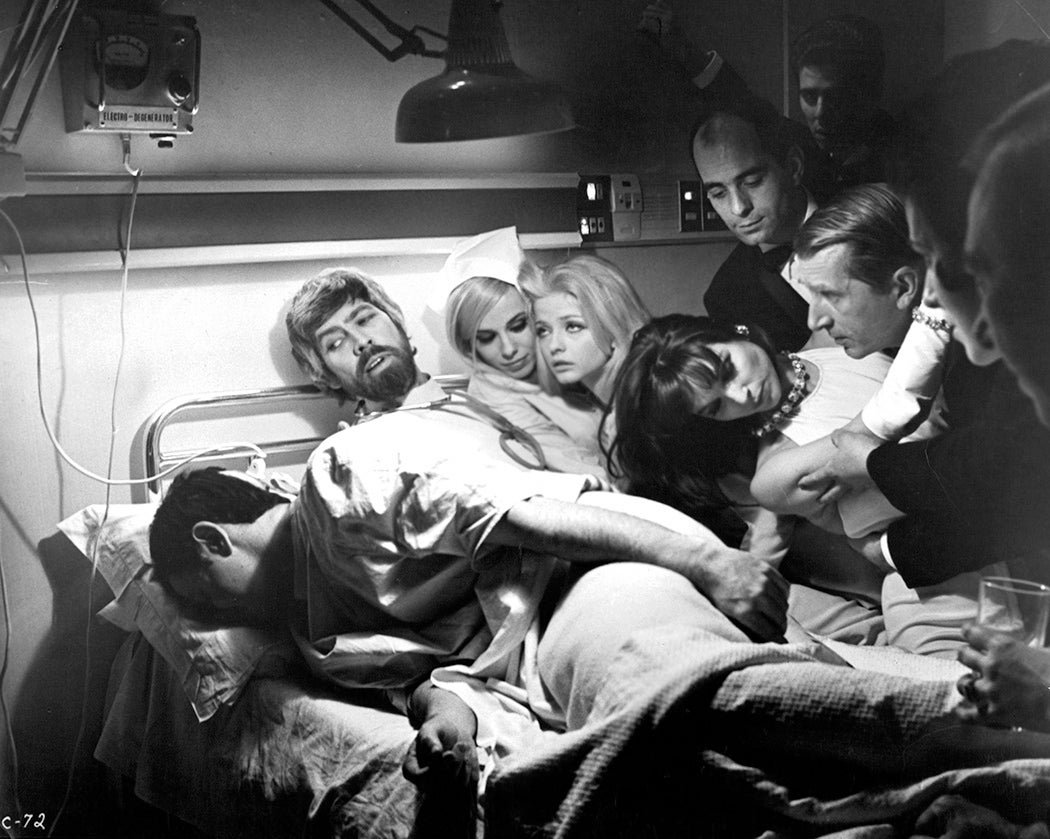
Candy, a novel cowritten with Mason Hoffenberg, was Southern’s most famous title—a subversive “dirty book” loosely based on Voltaire’s Candide. First released in 1958 under the pen name Maxwell Kenton, it was swiftly banned in France (its publisher, the Paris-based Olympia Press, had also put out other scandalous volumes like Lolita and Naked Lunch). When it was finally re-released in 1964 in the U.S. (now under the coauthors real names), Candy became a bestseller. So much so, the title ended up being scrutinized by J. Edgar Hoover’s FBI for being a work of pornography. In a memorandum, the agency ultimately determined the book was a “satirical parody of the pornographic books which currently flood our newsstands,” and as such, should be left alone.
Also in 1958, Southern put out Flash and Filigree, a derisive, surrealistic novel that’s a send up of, among a slew of other things, the medical and entertainment industries. One of the main characters is “the world’s foremost dermatologist,” Dr. Frederick Eichner, who meets Felix Treevly, a trickster figure who takes Eichner through a series of crazed follies. Probably the most memorable one is Eichner stumbling into a television studio where a quiz TV show, called What’s My Disease, is taping. Contestants are pushed out on stage and a logic-professor host wonders whether they have a serious ailment. “Is it elephantiasis?,” he quizzes one participant after several queries from the audience. It happens to be the right answer. Here, it could be argued, Southern’s narrative presages the tawdry side of today’s reality shows, particularly the notion of using another’s suffering as a form of entertainment.
Southern’s greatest literary achievement, though, might be The Magic Christian (1959), an absurdist comic novel about the fanatical exploits of Guy Grand, an eccentric billionaire who uses his wealth to pull outlandish pranks on the public in an effort to prove that everyone has a price. His sole stated goal is to “make it hot for them” (a credo Southern used for his own work—also the title of his unfinished autobiography). Grand’s satirical campaign against American culture is free-roaming: he takes on advertising, the media, film, TV, sports, and more.
In one exploit, Grand, who often wears plastic animal masks while pulling his escapade, procures manure, urine, and blood from a Chicago stockyard, has it poured into a boiling hot vat in the suburbs, and stirs in thousands of dollars with a sign that reads “FREE $ HERE.” Elsewhere, for instance, he bribes an actor playing a doctor on a live TV medical drama to halt a surgery, look into the camera, and tell the audience that if he has to say “one more line of this drivel,” he’ll “vomit right into that incision I’ve made.” It caps off with him playfully terrorizing rich patrons on his luxury cruise ship.

The book hardly has a plot. Taken one way, it’s a work of so-called “termite art,” the influential coinage by the critic Manny Farber in his essay “White Elephant Art vs. Termite Art” (1962). For Farber, white-elephant art was the concept of shooting for a masterpiece—works of art crafted with “overripe technique shrieking with precocity, fame, ambition.” Termite art, meanwhile, is work that “goes always forward eating its own boundaries, and likely as not, leaves nothing in its path other than signs of eager, industrious, unkempt activity.”
After the publication of The Magic Christian—mostly because of monetary problems—Southern moved away from what he called “the Quality Lit game,” shifting mostly to journalism, criticism, and, in the end, screenwriting. He landed gigs with places like the aforementioned Esquire—and dismantled the style and rhythm of magazine writing at the time in the process. Indeed, Southern laid the groundwork for writers like Hunter S. Thompson and David Foster Wallace.
In 1963, Esquire ran Southern’s “Twirling at Ole Miss.,” a piece Tom Wolfe cited as the first to use so-called New Journalism techniques, a mash-up of reportage and the narrative style often associated with fiction. One could argue that Norman Mailer got there first—or, for that matter, nineteenth-century writers like Stephen Crane. Three year earlier, Esquire sent Mailer to the 1960 Democratic National Convention. The result was “Superman Comes to the Supermarket,” which focuses on John F. Kennedy’s ramp up to the presidency. Mailer acts as a floating eye, subjectively documenting the circus. What was fresh about what Southern did in “Twirling” was centering himself as a character. On the surface, the premise is simple and seemingly boring—a journalist going to Oxford, Mississippi, to cover the Dixie National Baton Twirling Institute. But as Wolfe noted, the “supposed subject (e.g., baton twirlers) becomes incidental.” The story becomes inverted—rather than a reported story, it morphs into a story about Southern doing the reporting.
* * *
Southern longed to work on movies, writing at one point, “it is not possible for a book to compete, aesthetically, psychologically, or in any other way, with a film.”
In the fall of 1962, the director Stanley Kubrick and the writer Peter George found themselves stuck. They were working on a film-script outline based on George’s Red Alert, a novel published in 1958 under the pseudonym Peter Bryant. An officer for the Royal Air Force, George took on the fake name due to the work’s focus: the possible end of the world through accidental nuclear war.
Kubrick and George were culling together a melodrama around the military-industrial complex—one that Kubrick felt wasn’t working—mainly because of the existential absurdity of the apocalyptic premise. Around then, Peter Sellers—the comedic actor and eventual star of the film—gave Kubrick a copy of The Magic Christian (Sellers, it is said, bought 100 or so copies to give as gifts to friends). Kubrick was absorbed by the book, and ended up bringing Southern on board to collaborate on what would ultimately become the subversive black comedy Dr Strangelove or: How I Learned to Stop Worrying and Love the Bomb.
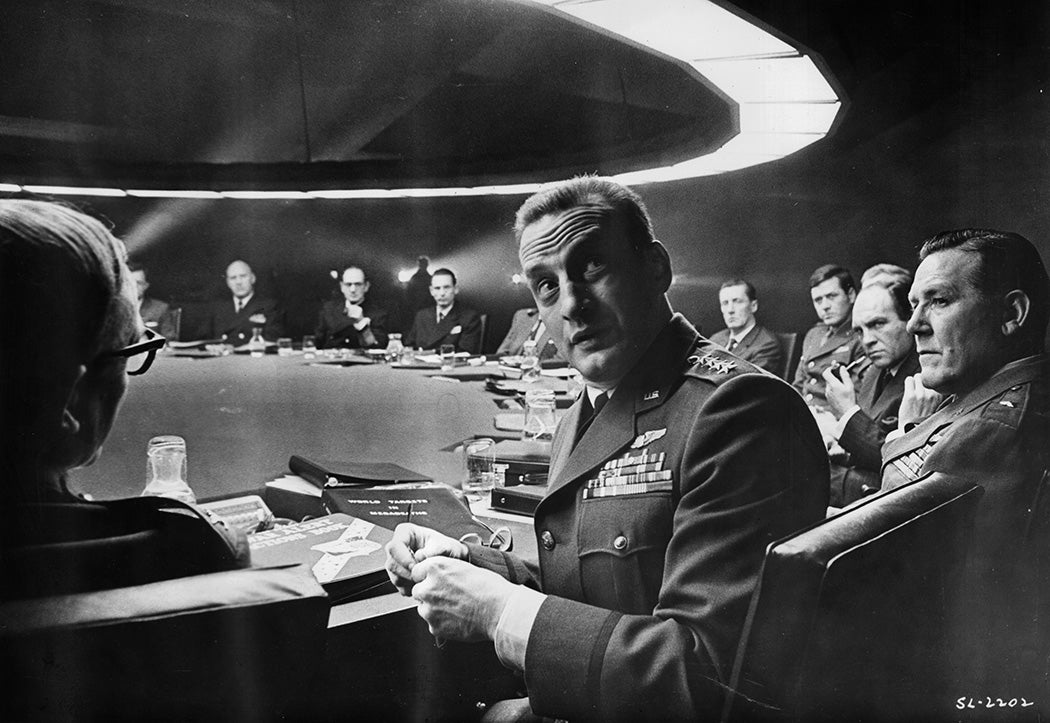
With Southern as a collaborator, Dr. Strangelove’s script changed tonally, morphing into a “comic-grotesque” tug-of-war between the rational and the absurd, with the latter winning out. But it’s also hilarious, chock-full of caricature, subversive sexual jokes, a torrent of innuendos, riffs on names, and all-out tomfoolery.
“Mein Führer, I can valk!” the nuclear scientist and former-Nazi, Dr. Strangelove, shouts while standing up from his wheelchair to salute the U.S. President, named Merkin Muffley, near the film’s crescendo (Sellers played both characters). Moments before, the Hitler-sympathizing scientist struggles to keep his mechanical arm from throwing up a Nazi “heil” sign. This is clearly a Southern crafted scene—an absurdist, out-of-nowhere gag that pokes fun at the macabre situation.
General Jack Ripper (played by Sterling Hayden) believes the U.S.S.R. was engaging in a “conspiracy to sap and impurify all of our precious bodily fluids,” and thus, without authorization from the president, sends off a batch of B-52 bombers armed with H-bombs, which in turn eventually sets off a Soviet Doomsday Machine—one that can wipe out humanity. A slew of nuclear explosions ensues. In the end, as the critic Stanley Kauffmann once argued, “[t]he real Doomsday Machine is men.”
* * *

Off the success of Dr. Strangelove, Southern co-wrote movies like The Cincinnati Kid (1965) and Barbarella (1968). One of his lasting contributions to cinema was his input on Easy Rider (1969). Southern came up with the title for the movie—a “easy rider” being a slang word for a man who is financially supported by a female prostitute (the guy lounges around all day while mooching off her; they would have sex, so the coinage goes, after her shift ends). Like Kubrick, Peter Fonda and Dennis Hopper brought Southern on to work on the seed of the idea they had for the film. Fonda and particularly Hopper wrongly tried to downplay his role after the movie became a hit, and he made a nominal fee for the film.
But there’s no denying it: Southern’s fingerprint is smeared all over the work. Take the moral glue of the movie—the charismatic, tragic character George Hanson—an alcoholic, the Ole Miss.-sweater wearing attorney played by the then-little-known actor Jack Nicholson. Hanson is clearly a Southern creation—one loosely based on the fictional lawyer Gavin Stevens, a character that pops up frequently in the novels of William Faulkner. Although Hopper tried to take credit for Hanson, Southern insisted that he almost wrote almost all of Nicholson’s dialog—indeed, Southern later claimed he was essentially the sole writer of the film.
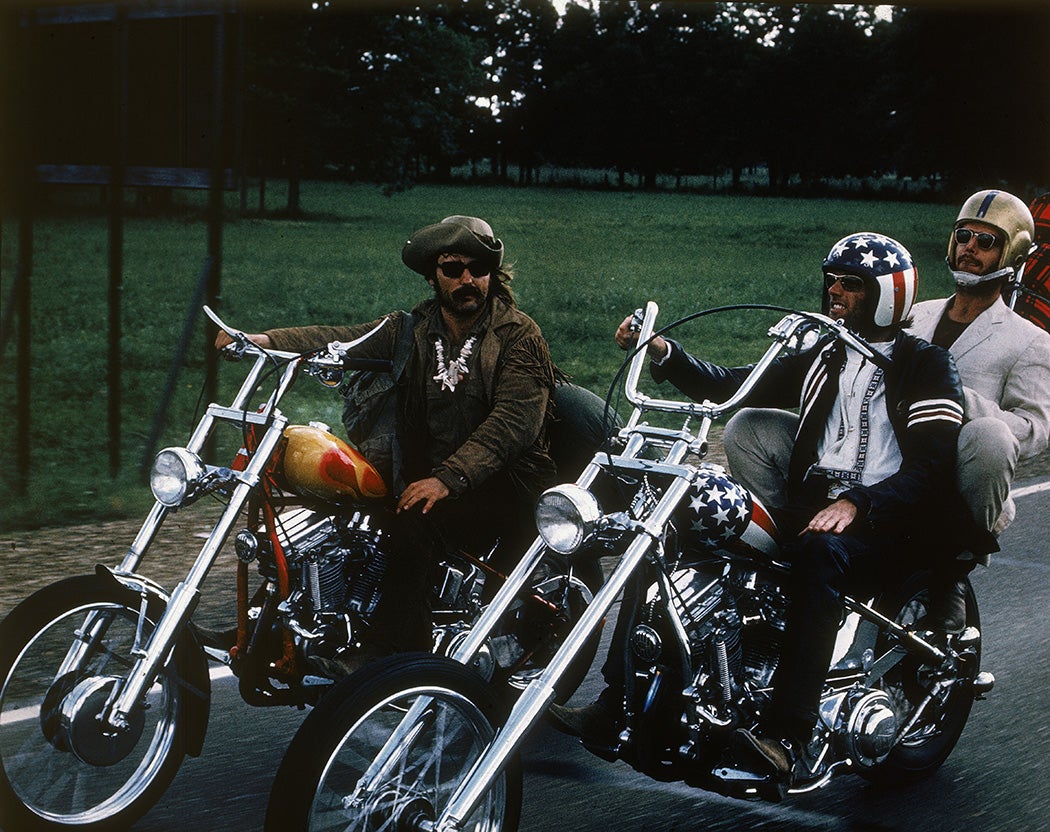
One critic, Joe B. Lawrence, reads the movie as an allegory “classified with journey archetypes,” which “rewrites the idealized American myth of the quest for complete individual freedom.” It’s also about the fracturing of idealism. The famous, enigmatic ending of the movie, which Southern conceived of, has been read as a signifier of the end Sixties romanticism. Ellen Willis, writing for The New York Review of Books, concluded her review of the film, by asking: “Isn’t that exactly where America is heading, to some abrupt, apocalyptic explosion—even if the explosion occurs only in our heads?”
What ties Southern’s movies together is a willingness to eschew a neat, happy ending for the audience (the world ends in the former; the two main characters get shot and possibly killed in the latter). Both films suggest that there is no escaping this maze, since it is of our own very construction. “We blew it!” Fonda’s character, Captain America, says towards the end Easy Rider. In Dr. Strangelove, the movie caps off with Major T. J. “King” Kong riding a freefalling nuclear bomb, headed for the U.S.S.R. While Kong doesn’t know the detonation will cause a Russian doomsday device to blow up the world, here, still, he “blew it.”
* * *
The narrative usually told about Southern is that his shining, surreal career was largely subdued by the 1970s, done in by drugs, drinking, and debt. There were some high times still to be had, though largely unfruitful ones when it came to literary output. In the early part of the decade, for instance, Southern—along with Truman Capote—traveled with The Rolling Stones in 1972 on the debauched Exile on Main St. tour.
A producer commissioned a screenplay about Merlin with the idea that Mick Jagger might play an Arthurian knight, but it never materialized. Southern partied with Ringo Starr and botched an attempt to write another novel (assigned by the publisher of Rolling Stone magazine, Jann Wenner). In 1981, Saturday Night Live brought him on as a staff writer, perhaps the only “proper” job he ever had, and he stayed on for one season. During the stint, he convinced his acquaintance Miles Davis to perform on the show.
He went on to cofound a film production firm with songwriter Harry Nilsson, which produced a single (terrible) movie in 1988, The Telephone starring Whoopi Goldberg. In the 1990s, he published the novel Texas Summer, and taught sporadically at Yale, eventually landing a stable position (albeit a low-paying one) teaching film writing at Columbia. In late October 1995, while walking up a flight of stairs at the university, he stumbled and fell. A few days later he died, at 71, from respiratory failure. A physician asked his son, Nile Southern, whether Terry had once worked in a coal mine since his lungs were so tarnished from heavy smoking. Kurt Vonnegut gave his eulogy.
Despite his two-decade decline and subsequently falling out of style, Southern and his legacy are worth a serious reappraisal—particularly now. The point of satire, the best bits of it, are not only to take on and expose unjust power and foolishness, but also to cut at the culture that allows this irrationality and folly to subsist in the first place. Southern’s finest work consistently worked in both modes—crashing cultural platitudes and political pieties, showing how we’re all culprits to the absurdity and grotesqueness we find in the world. As the critic David L. Ulin aptly writes in the 2019 rerelease of Flash and Filigree: “We are living in a Terry Southern novel, in which insanity has been reframed as normal, so often, so astonishingly, that we barely notice anymore.” Southern’s satire, in the end, suggests we need to open our eyes wider and take notice of the madness we’ve caused.




